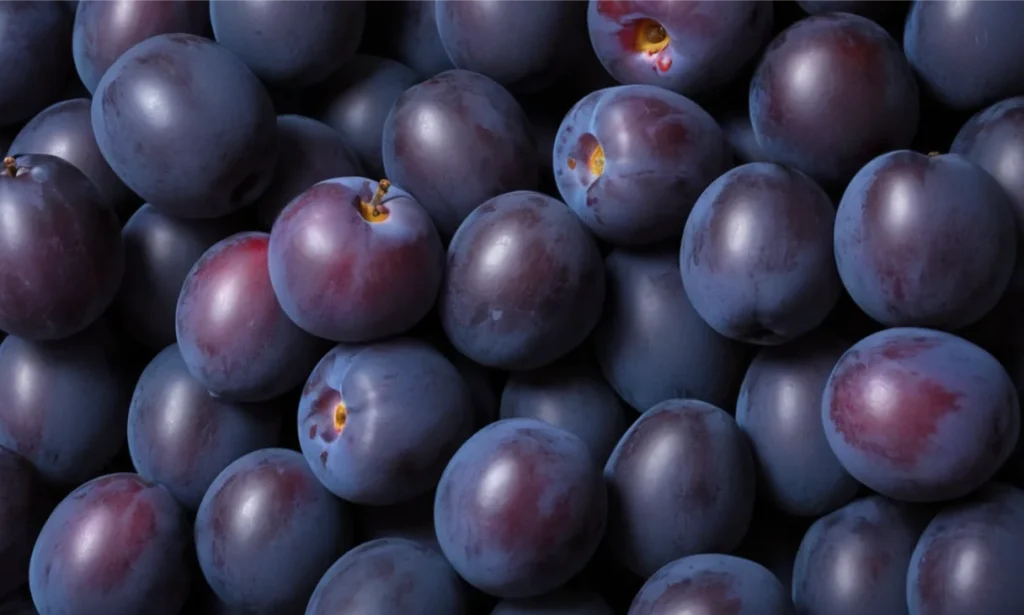14 Facts About Cherry Plum

The cherry plum is a delightful little fruit that packs a sweet and tangy punch. Though small, it holds several surprises. Here are 14 fascinating facts about this gem of a fruit.
Introduction
Also known as the myrobalan plum, the cherry plum is believed to have originated in Southeastern Europe and Southwestern Asia. It has been cultivated since ancient times across Europe and Asia. The cherry plum tree is popular for its ornamental flowers and leaves, while the fruit itself can be eaten fresh or used for jams, juices, and baked goods.
Underneath its smooth, thin skin lies a juicy yellow flesh with a flavor characterized as sweet, sour, and slightly spicy. Let’s explore more about this versatile little fruit.
Facts About Cherry Plum

- It’s a natural hybrid of plum and cherry. The cherry plum is thought to be a naturally occurring hybrid between a cherry (Prunus avium) and a sloe plum (Prunus spinosa). This explains its common name and flavor profile.
- There are over 30 cultivars. Through selective breeding, over 30 cultivated varieties of the cherry plum have emerged. These cultivars differ in terms of tree shape, leaf color, fruit color, flavor, ripening time, and more. Popular ones include Early Laxton, Blue Tit, and Marjorie’s Seedling.
- It ripens earlier than plums. Cherry plums ripen earlier in summer compared to European and Japanese plums, starting as early as June and through September. Their early availability makes them a beloved summer fruit.
- The tree is versatile. Cherry plum trees are not only grown for fruit production but also appreciated for ornamental qualities like pretty blossoms and purple foliage. Dwarf varieties work well for home gardens.
- It can handle cold climates. Most cherry plum trees are hardy down to zone 4 or 5, meaning they can withstand cold winter climates. A few varieties tolerate even colder zones of 3 or 2.
- The fruit is small but abundant. Cherry plums are petite, averaging 2-3 cm in diameter. What the trees lack in size, they make up for in yield. With the right care and pruning, a single tree can bear hundreds of cherry plums.
- They can be eaten fresh or cooked. Tart cherry plums pack quite the tangy punch when eaten raw. Tree-ripened fruits tend to be sweeter for fresh snacking. The fruits also shine when cooked into sweet-tart jams, juices, and baked desserts.
- It’s loaded with nutrients. Cherry plums provide a healthy dose of vitamins A, C, and K. They also contain polyphenols and carotenoids with antioxidant and anti-inflammatory benefits.
- The pits and leaves have uses too. In traditional Chinese medicine, cherry plum pits and leaves are used to treat a variety of ailments, from constipation to skin inflammations. However, consult a professional before consuming.
- Cherry plum trees have lovely blossoms. In spring, cherry plum trees produce abundant white or pale pink five-petaled blossoms. Their early bloom time compared to other stone fruits gives the garden a welcomed pop of spring color.
- It can self-pollinate. Cherry plum trees are self-fertile, meaning one tree can set fruit on its own. Even so, planting different cultivars close together improves pollination and fruit production.
- They attract pollinators. The nectar-rich spring blossoms of cherry plum trees feed hungry bees, helping boost honey production. The trees make a great addition to any pollinator-friendly garden.
- Birds love them too. Birds will flock to ripened cherry plums in late summer. Be prepared to share or use netting if you want the fruits for yourself.
- It’s an ancient fruit. Evidence of cherry plum cultivation dates back thousands of years to Neolithic sites in Europe. Their longevity speaks to this fruit’s enduring versatility and appeal through the ages.
Conclusion
For a petite fruit, the cherry plum carries an outsized personality. Its sweet-tart flavor provides a burst of summer, while the abundant blossoms welcome spring. Whether eaten fresh or cooked into jams, this adaptable little fruit has earned its place in gardens and culinary traditions across continents over millennia. The next time you spot cherry plums at the market, consider taking home some of these gems.
FAQ
What is Prunus cerasifera?
Prunus cerasifera, commonly known as cherry plum or myrobalan plum, is a species of plum native to Southeast Europe and Western Asia. It is an ornamental tree valued for its early spring flowers and edible fruit.
Where can Prunus cerasifera be found?
This species is originally from Southeast Europe and Western Asia but has been naturalized in the British Isles, scattered locations in North America, and parts of Southeast Australia, where it is sometimes considered invasive.
What are the characteristics of Prunus cerasifera?
Cherry plums are large shrubs or small trees that can reach 8–12 meters in height with ovate leaves and spiny branches sometimes. They produce white or pale pink flowers early in spring and round edible fruits that ripen to yellow or red.
How is Prunus cerasifera used in cultivation?
The cherry plum is grown as an ornamental for its early blossoms, with many cultivars selected for their foliage and flower color. It serves as rootstock for other Prunus species and is also used in bonsai and living sculpture.
What are some popular cultivars of Prunus cerasifera?
Popular cultivars include P. cerasifera ‘Nigra’, with black foliage and pink flowers, and Prunus × cistena, a hybrid with purple leaves. Both have received the Royal Horticultural Society’s Award of Garden Merit. Other varieties are used in foods like Georgian tkemali sauce or for ornamental purposes.





